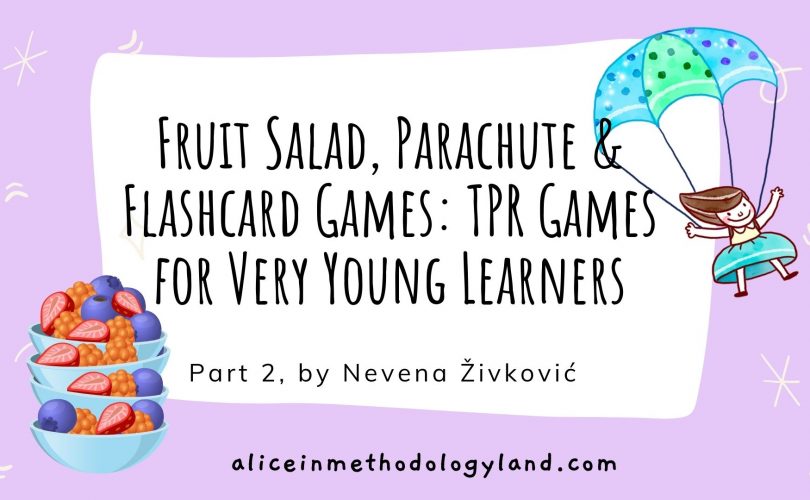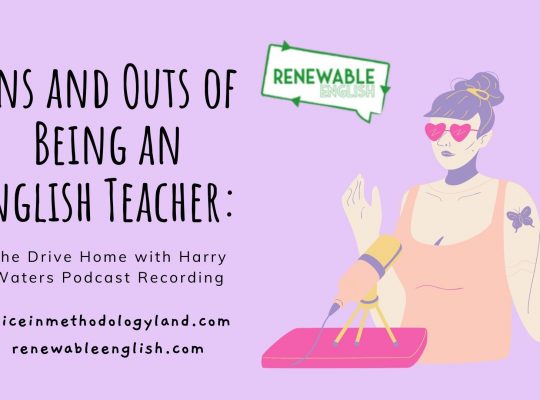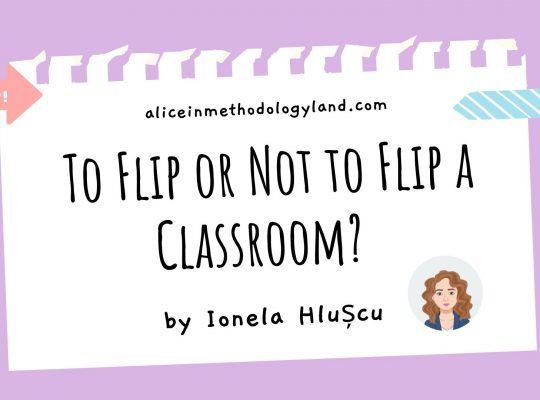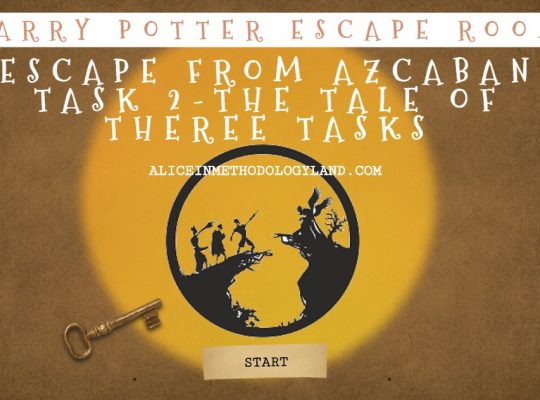Hello, my dear educators! Have you ever wondered how you can teach very young learners and what are some effective games you can play? The next few posts will be guests from Nevena Živković, an amazing preschool teacher from Novi Sad, Serbia, who also teaches English to very young learners in a public preschool! She is not an English teacher, but she completed a professional development program to learn how to teach English to her preschoolers. Her games are shared unedited, as she wrote them! Nevena’s work is outstanding, and her English level is brilliant for a person who learned English as a hobby!
Parachute games
We can use a parachute in several ways while learning English. One of them is learning colors. The teacher tells the children to lie down under a certain color:
Marko, lie under the blue color on the parachute!
Milica, lie under the red color!
The children sit around a spread parachute and sing the song “Blue blue is the color I see,” The children see the color that the teacher shows and can compare it with the colors on the clothes and continue singing and playing this game.
I also use a parachute when learning the terms up, down, in, out, big circle, small circle “Make a circle” song in which children stand in a circle and hold a parachute in their hands.
We sing the song “Walking walking” while imitating all forms of movement (jumping, walking, tip-toeing, sneaking…). In the song “Walking in the jungle,” we use a parachute to hide if we are afraid of the animals. (I couldn’t find an example on YouTube, so I am sharing another similar song with a familiar melody – the Open Shut Them song.)
While the children are standing in a circle and holding a parachute for its ends, the teacher throws colorful balls. when a ball falls out, the children answer the question:
Which ball fell out?
The white ball fell out!
Jovan put the white ball back!
The fruit salad
This game is played by children sitting in a circle, and each child gets stickers with the name of the fruit. The first child is an apple, the second a pear, the third a plum, the fourth an apple, the fifth a pear, etc. When the teacher says PLUMS, all the children who are plums should get up and change places. The same goes for apples and pears. And when the teacher says Fruit salad, then all the children change places.
Different vocabulary
This game can be modified in many ways. After each activity in English, children are given different words instead of the names of fruit: colors, vegetables, body parts, vehicles, days of the week, animals, etc.
You can also make masks to keep on their heads during the game. Masks often help children to have a dialogue.
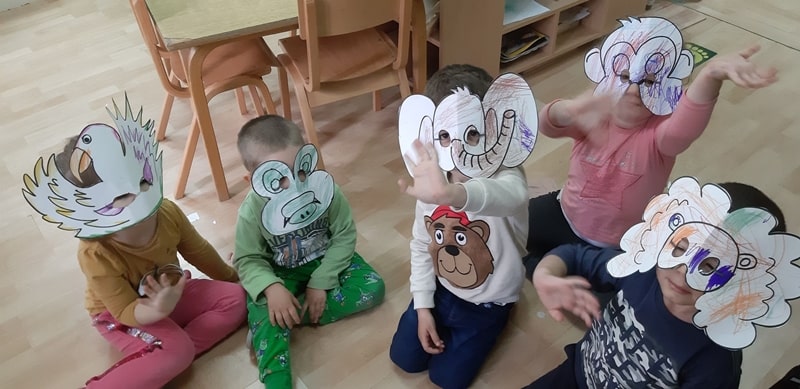
Relating the activity to different topics
If the previous activity was related to food – what we put on pizza, we help them repeat the words we learned through that activity. If we describe a lion with all the body parts in the story, we will use that vocabulary. The game can be used after each activity for review.
Instead of the teacher, the one who assigns the activity can also be a child in older groups.
Flashcard games and TPR
A large percentage of children belong to the category of the visual learning style, and they learn best through illustrations and pictures on memory cards and numerous card games.
Hit the picture on the table
The cards we used in the game ”Hit the picture” are also used for this game. We turn all the cards towards the table. Two or four children are sitting or standing at the table who draw cards and say what they see on them one by one. If they say correctly, the card belongs to them. If they make a mistake, they hand the card to the child sitting next to them. The winner is the child who collects the most cards. Children can also play this game independently.

Jump on the picture on the floor
Another way to use these cards is to keep them lined up in a circle or a line on the floor, and the children jump from card to card, saying what they see. If they don’t know a term, they skip it. This game is most loved by children who know fewer words because it allows them to skip what they don’t know without dropping out of the game. And it’s not a problem if other children tell the word because they teach each other this way.
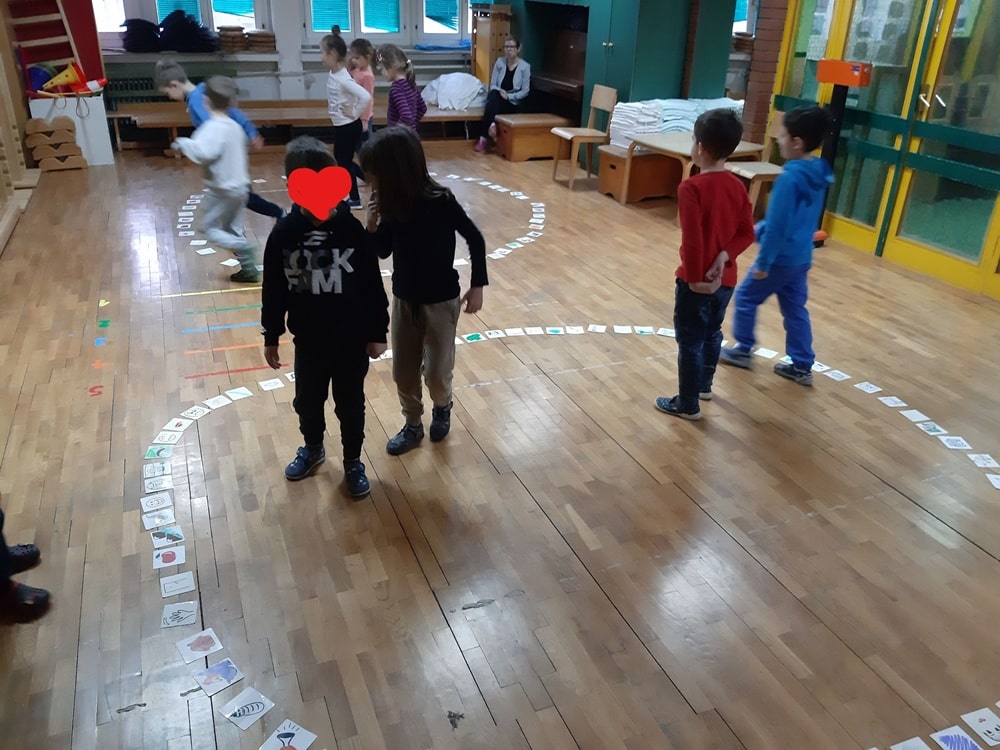
With these assessment games, I made it easier because children who do not want to participate in the ongoing activity (reading a story, singing a song) separate and play in small groups.

Nevena Živković is a state-licensed preschool teacher. She completed the philological grammar school in Sremski Karlovci. After that, she continued her education and got a Bachelor’s Degree in Early Childhood Education. She worked as a preschool teacher in a children’s hospital and a private preschool. Professional development is one of her passions. She is very invested in advancing her competencies by attending accredited professional development training. She is the administrator of a Facebook group,” Bunjara.” This group has over 30.000 members, and teachers use it to share creative activities for children.
She was the organizer and the presenter at a conference,” Bunjarci,” where she taught English to very young learners in a preschool setting. She enjoys using the NCT method of learning, and she also plays the guitar, sings, and acts in her classroom. Her next step is to publish a book related to learning about countries worldwide through songs she developed.
To conclude
What do you think about using these interesting flashcard games for very young learners? Do you have any experience that you would like to share? Please write in the comments or via the contact page. I would love to hear your opinion!

